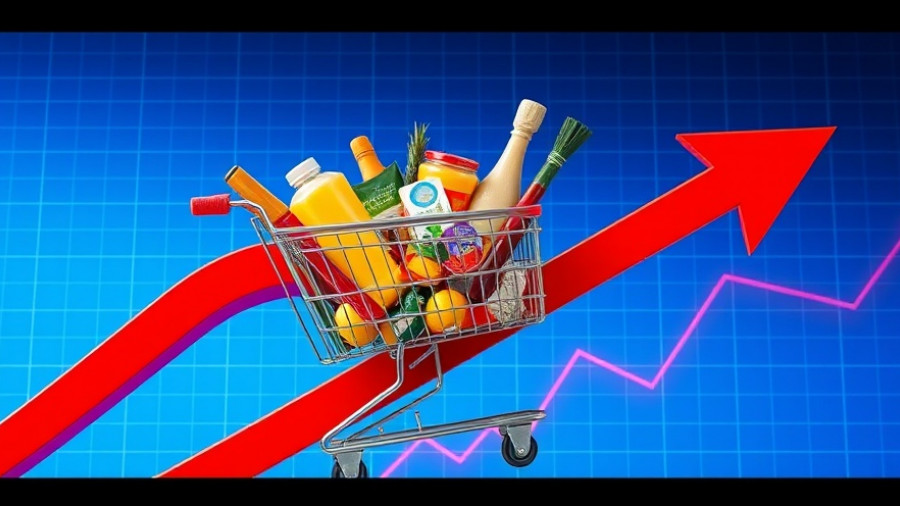
Rising Grocery Prices: A Reality Check for American Households
Over the past five years, grocery prices have soared by over 25%, significantly outpacing average wage growth. For many families, the feeling of being squeezed at checkout is becoming a norm, and experts suggest we may need to brace ourselves for persistent high prices. With food-at-home inflation currently hovering around 2.7% annually, it seems that lower prices may never make a return, and the toll on American households could remain substantial.
The Inflation Landscape: Will Prices Ever Fall?
When it comes to the question swirling in the minds of many shoppers—will grocery prices ever drop? The consensus among economists is that individual item prices might bounce back but overall, grocery prices are unlikely to decrease in nominal terms. Professor Jean-Pierre Dubé from the University of Chicago Booth School of Business articulates this sentiment well, predicting that “prices will not come down, at least in nominal terms.” This echoes Phil Lempert, a food industry analyst, who bluntly states, “My answer is simple: never.”
The Asymmetry of Grocery Pricing: Cost Increases vs. Decreases
A troubling trend persists; cost increases for food items are quickly passed on to consumers, while reductions are handled cautiously, if at all. Dubé explains that this "asymmetry" makes it difficult for consumers to see tangible price drops when manufacturing costs decline. Instead, grocery stores are often more inclined to keep prices elevated, taking advantage of any justification gained through past pressures on supply chains.
Understanding the Role of 'Profit Taking'
In 2023, some brands were accused of “profit-taking,” seeking to capitalize on heightened awareness of supply chain issues to raise prices. This approach has economic implications, sparking consumer discontent over rising costs while exposing financial motives linked to grocery store strategies. As awareness of these practices increases among consumers, the action towards more ethical pricing may begin to influence shopping habits.
Consumer Alternatives: How to Cope with Higher Prices
As consumers confront this new normal, many are turning towards alternative purchasing strategies. A significant percentage of households, roughly 31%, are shifting to private-label goods as a cost-saving measure. These alternatives are becoming increasingly popular as they typically offer savings of around 13% compared to national brands. This trend reflects a broader shift in consumer mindset: value for money is now paramount.
Promotions as a Lifeline: Shopping Smarter
Additionally, shoppers are making conscious moves to take advantage of promotional sales. Reports indicate that promotional sales across grocery stores are outperforming their non-promoted counterparts, with a notable 6% growth versus a slight decline in standard sales. This insight encourages consumers to remain vigilant shoppers, looking for opportunities to reap savings amidst rising prices.
The Future of Food Prices: What Lies Ahead?
Looking ahead, potential changes in trade policies, especially tariff reductions, could offer relief for specific grocery items. For instance, coffee prices leading CPI categories have surged, and reversing previous tariffs might provide cost benefits to consumers. Yet, with lingering supply chain concerns and overall inflation pressures, the overarching outlook remains uncertain, leaving both economists and consumers cautious.
Conclusion: Empowering Consumers in a Changing Economy
Despite grim forecasts regarding the persistence of high grocery prices, there are strategies to mitigate the financial impact. From seeking private label products to taking advantage of promotions, enlightened consumer behavior can provide some buffer against the economic challenges ahead. By adapting our purchasing habits, we can navigate the complexities of rising food costs while continuously advocating for fair pricing from companies.
For homeowners interested in further exploring ways to save on everyday expenses like energy through solar adoption, understanding financial options and available incentives can extend your budget and contribute positively to your household's bottom line.
 Add Row
Add Row  Add
Add 



Write A Comment